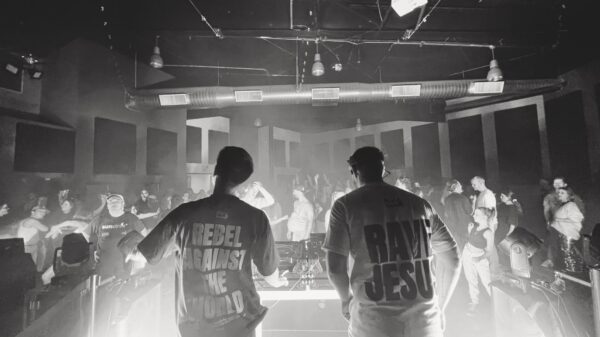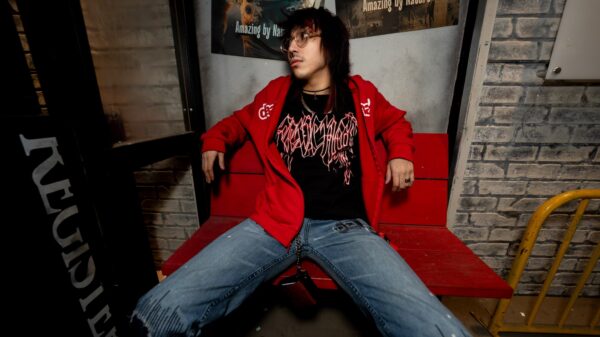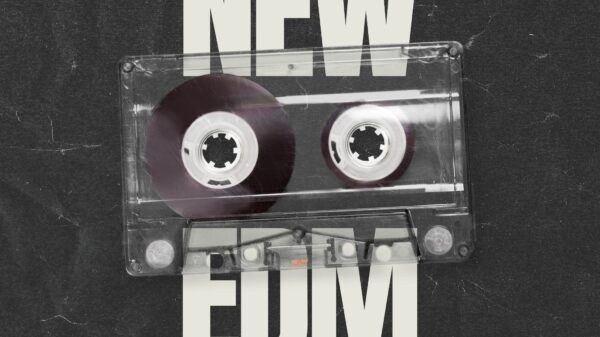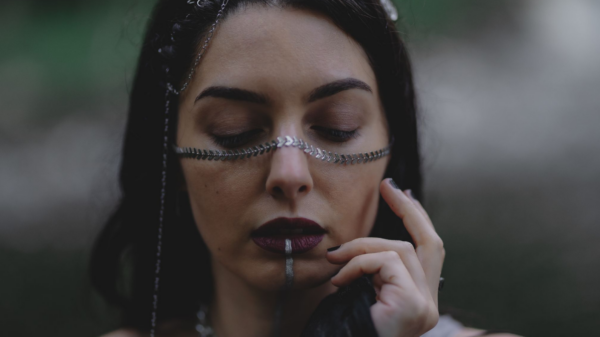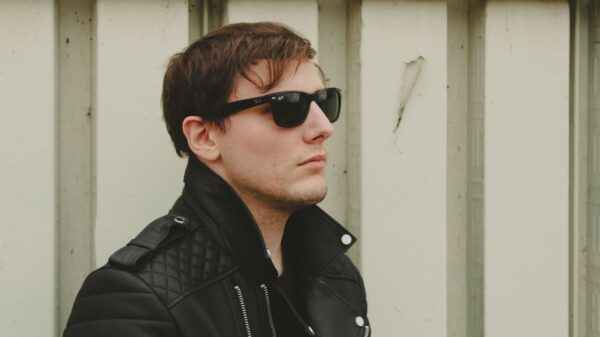A new song permeates the airwaves and travels into your ears. First comes the beat, followed by the humming groove of the bassline. Ticking, high-frequency rhythms enter and juxtapose with the low ends. Synths flourish and color the space between.
Then a new element enters – something that breaks the computer-generated mold, a sound that moves with sentience and emotes organically. A melody is literally speaking to you with perceivable thoughts to associate with the soundscape it thrives in, giving the song a sonic signature that brands into your brain and leaves you remembering it long after its last second.
By both textbook and colloquial definition, dance music has always been primarily concerned with establishing an aural force worth moving to, but the difference between a dance music tune with fully-fledged vocals and a dance music tune without is an absence of a wondrous new dimension. From Delerium and Sarah McLachlan’s iconic trance landmark, “Silence,” to Krewella’s ubiquitous crossover pop-EDM anthem, “Alive,” vocal elements have helped push many dance music tracks beyond its beat and pulsating synths into a higher echelon of musical expression and longevity. When they’re present, the vocals are essentially the heart of the song.
But in contrast to the pop music world, where the person who’s singing the song is the one in the spotlight while the producers and songwriters that helped craft the song stand off-stage, the role of vocalists in the dance music world are stuck in a paradox: While the vocal component in a song is the center of attention by being a torch-carrying melody, the vocalists who create that component are generally seen as secondary to the producer in a collaboration. Even further, the perception of the public ties the vocalist’s identity to the track and the producer, rather than the vocalist being their own artistic entity.
“It’s not always about the producer, but it sucks that that’s what a lot of people seem to think [in a collaboration],” says Tania Zygar. Tania’s been working in dance music for five years, collaborating with big names in trance and progressive music such as BT, Arty, tyDi, Max Graham, Shogun and Estiva. “I hate being labeled a vocalist because I do so much more than singing. I like being called a songwriter before anything else.”

Tania points out that it's important for her and her peers to show that they're more than a voice on someone's track.
That sentiment is shared by plenty of others in her field. As the term “vocalist” works in marginalizing tandem with the discrepancy of a featured credit in a song (as opposed to being a bona fide partner), the truth of the matter is that many vocalists are rather singer-songwriters that not only fulfill the duty of composing their own melodies, harmonies and lyrics in a collaboration, but are solo musicians themselves.
Laura Brehm has been working in dance music for over two years, but began as a singer-songwriter when she was a teenager, having made two solo albums before she turned 20. Amongst working with the gamut of Monstercat’s roster of producers like Mr. FijiWiji, Rameses B, Varien, Elliot Berger, Tut Tut Child, Rogue and Two Thirds (as well as nearing a new release with Draper), she continues to write her own songs – some of which she desires to collaborate with other producers to sculpt into an EDM song, which, in fact, is how many dance music collaborations are first conceived.
“Pure Sunlight,” her collaboration with Mr. FijiWiji & AgNO3, originally started as her acoustic composition that grew into the glitch-hoppy goodness that it’s known as today. The same went for “Transformations” with Rameses B, but as opposed to the credit in “Pure Sunlight” being spread equally amongst all three musicians in the artist byline, Laura was only given a featured credit on “Transformations.”
“It makes me feel like I’m just a singer – like the producer already wrote everything and I’m just performing it. That’s what I think ‘featuring’ hints towards,” Laura elaborates on the semantics. “And what’s a bit irritating is that, because a lot of the tracks I have out are ‘producer featuring Laura Brehm’, a lot of people ask me if I wrote the lyrics and the vocals, and I’m like, ‘Yes! Of course I did!’”
While in some cases, the featured credit is exactly what it is at face value (for example, Foxes didn’t write “Clarity” with Zedd), there are many other cases where the featured credit downplays the size of the role a singer-songwriter had in a collaboration. On Above & Beyond’s sophomore album, Group Therapy, Zoe Johnston helped write every song she was a part of (save “Love Is Not Enough”), but is given a featured credit on each of those tracks. Skylar Grey helped write Kaskade’s successful single “Room For Happiness,” but is only given a featured credit. Matthew Koma, Ellie Goulding, and Bright Lights helped write their respective collaborations with Zedd on his debut album, Clarity, but are all given featured credits as well.
That list only grows when you dig deeper.
***
Vocals have not only helped distinguish a dance track from its instrumental brethren, but they also increase the opportunities for remixes and bootlegs from other producers; remixes that essentially center around the vocals and create a brand new take on the song.
This is how Mimi Page–who’s worked with Bassnectar, Seven Lions, Minnesota, Paris Blohm and Shotgun Radio–first got involved with dance music. Originally being a solo producer that makes ambient downtempo, many of her tracks have been remixed by numerous producers during the rise of dubstep (which went so far as having a remix album of hers made, entitled Harmonious Heartbeats), and it was by osmosis that Mimi would start to do vocal collaborations as the requests kept coming.
“It feels weird that I’m most known for singing in EDM. I never thought in a million years I’d be a singer; I’m a producer at heart,” says Mimi.
Similar momentum was experienced by both Tania and Laura once their voices first broke into dance music – what began as little projects with producer friends for the simple sake of creation and adoration for dance music ended up snowballing into a viable facet. In the most basic of economic principles, the demand was high, so it made sense to keep working in it.
Unfortunately, the economics in those collaborations get uglier when you put them under a microscope, and the majority of contracts are quite skewed. Normally in the Music Industry, the person that writes the lyrics for a song owns fifty percent of that song. Dance music, however, has always worked with the scales tipped toward the producer, and collaborating singer-songwriters oftentimes have to campaign for a fair share of the song; and oftentimes those campaigns for fair shares have gotten heated.
“I fought my way up from five percent once, and I was told that I was being difficult for fighting that,” Mimi shares. “They gave me the ‘you’re just a topliner’ excuse, but I wrote the lyrics, I wrote the harmonies, I wrote the melodic line–which was different than the instrumental–and I produced my own vocals. So don’t tell me I’m worth five percent.”
The dismissive “you’re just a topliner” comment is not only false in many cases, but once again conflicts with the undeniable fact that what these singer-songwriters bring to the table is valuable and clearly something that producers want. But in similar nature to the pigeonholing label of “vocalist,” most collaborations are creatively lopsided, with the producer only wanting the vocalist to add the vocal part on top of a track they already made on their own. Though this is generally the way dance music collaborations are done, the term “collaboration” ends up being a misnomer.
“I don’t like that way at all anymore,” Tania tells. “The first big song I wrote for in that manner was for Tiesto. [His agency] asked me to submit a demo, but it felt like a work order; it wasn’t a creative process. There were over fifty submissions for that song, which I didn’t know, and even though I was in the top running, I still didn’t get it. The same thing went for Dash Berlin’s album – you write a song for them hoping it’s a collaborative thing, but you’re treated as a contractor rather than an artist.”
Laura was subjected to the same kind of work order, where the producer cast a wide net – asking several singer-songwriters to compose and send in a vocal demo in a matter of two days, but the singer-songwriters contacted weren’t aware of this opportunity being a quasi-competition. With only one being picked, the rest were discarded. Laura quickly felt sour not just for her time wasted by this fickle pseudo-collaboration, but for the time that all of the others in the same boat wasted as well.
“I thought that was really selfish. If you ask someone to work with you, you should want to genuinely work with them,” Laura rebukes. “It would be like if I took one of my solo songs and had five different producers do a production of it, and then only picking one. I can’t imagine doing that to someone, it’s so disrespectful.”
***
With all things considered, it’s easy to see many producers having a feudalistic mindset when it comes to their tracks and who they allow to be featured on them – their track is their property, and the collaborating singer-songwriter is merely occupying that space with their vocals. So why is it this way?
It may be a gender issue – like in nearly all professional fields, the dynamic is certainly there, even if the discrimination is not overt. It could be the idea that a producer spends more time working on a song with producing and mixing than the singer-songwriter does; which, while an understandable way to think, is a detrimental state of mind to be in when working on a so-called collaboration. But perhaps it goes even deeper into the psyche…
Looking back to the inner-workings of pop music, the producer’s role in making a song was akin to a workhorse, and little recognition was paid to them by the song’s audience. As dance music has always been producer-centric, the direct appreciation received for their craft is more appropriate and desirable than being shadowed by the person they would work for in pop music. Matt Lange, who works as both a solo producer and doing production work for singer-songwriters’ albums (including Tania Zygar’s upcoming album), sheds a light on the creative protocol when producing for another artist.
“Your entire mindset is no longer about you. When you’re working for another artist, you essentially want to please them,” he explains. “You have to figure out how to express what they feel and how to present it in a way that pleases them more than it pleases you. So there will be a lot of compromises you’ll make for yourself, but at the end of the day, it’s not about you, it’s all about them.”
The concept of two people working on a song but only one of them having creative carte blanche while the other merely serves the needs of the first person – doesn’t that sound familiar?
Nobody wants to be downtrodden, especially when it comes to a collaborative form of expression. If one’s job–nay, one’s passion–is rooted in creativity, it hurts to have that creativity stifled or undermined, and producers and singer-songwriters have experienced this frustration together in other realms of music.
Dance music has always been a haven for producers and their unfettered creativity, and recent years of the scene’s explosion have had producers become the new rockstars in music culture. But with that, singer-songwriters in dance music now have been further eclipsed by their producer partners. Despite the integral effect they’ve had in expanding dance music beyond the four walls of the nightclub, as well as solidifying songs into dance music landmarks that withstand the hyperactively short shelf life of the continuous and hasty ebb and flow of dance music tracks, they still struggle with the contradicting reality of being the primary element of a song and its emotion yet being seen as secondary in the song’s creation.
“You can’t treat the vocalist like you did five years ago, because it’s so closely tied now,” Tania stresses. “There are so many vocalists I speak to that are still dealing with feeling inferior, and it really sucks, because it’s hard being a songwriter.”
In art, there ought not to be a hierarchy, there ought not to be territorialism, and there ought not to be a form of creative segregation between producers and singer-songwriters. It’s these kinds of barriers that bottleneck the true potential of two musical minds working together, because if either person is railroaded into one person’s artistic idea, that’s not a true collaboration. As Mimi puts the pure ethos of collaboration ever so simply, “Let me take my sound and work it with your sound and let’s see what we can create.”
At the root of it all, it’s as easy as that.
***
Just in terms of having the music itself progress, whether in the grand scheme of things or just between the ones working in a project together, expansion upon musical ideas is necessary. That’s accomplished by broadening one’s artistic perspective, and it’s much easier to broaden that perspective by interacting and learning from other artistic minds rather than trying to expand from within the confines of your own box of creativity. And when singer-songwriters have more to offer than their voice, why turn that away?
“I’ve done the vocalist aspect for a while; I could continue doing it the way I have, or I could deepen it and bring it to a new level,” Laura explains, contemplating the future. “I’d like to be a part of the process as a whole, and add more to the song as a musician, like guitar or piano parts. I can do that as well as sing, so why not include those elements in a collaboration?”
But collaboration doesn’t only help one’s musical palette grow; it also helps one’s overall perspective in creativity expand. With a key purpose for collaboration being the melding of two artistic minds, a chemistry is born that wouldn’t exist if either person worked on something by themselves. And that’s not only an important element to capitalize on, it’s damn satisfying.
Even Matt, who’s not shy to paint himself particularly as a loner in the studio, has been working on a new experimental collaborative project with his friend and fellow EDM compatriot Jeza, called Ruin. Though they’ve seldom had the time to work together on it within the past few years and they’re still waiting for the perfect time to wholly dive into it, Matt always revels in being able to work with someone else in the same studio, because that collaborative chemistry is a treat and a feat beyond his own singular artistic conscious.
“The beautiful thing about working in the same room together is that you’ll both come in with your pre-conceived notions of what you’re gonna do, but that all changes the minute you’re in the room together. There’s gonna be a whole new chemistry that’s much more on the fly, and whatever the end result is, that would never be the case had you two not been in the same room together,” he describes.
Of course, logistical differences may not allow every collaboration to be one that occurs in the same physical space. That’s not necessarily a requisite to achieve creative synchronicity; the only place both artists need to be is on the same page.
Even though Tania and tyDi’s numerous collaborations together (a brand new one is also currently underway) were never in the same studio–Tania is based in Canada while tyDi is in Australia–Tania regards her collaborative chemistry with tyDi as one of the strongest she’s experienced because of the mutual communication. She’s also wrapping up a new track with Trivecta, and though this is their first time working together, the equality of creative input throughout the process has helped both of them work at optimal levels. And as iron sharpens iron, it even helped get Tania out of the creative rut she was experiencing from the disjointed process of demo requests.
“I lost my mojo after working on my album,” Tania admits. “After writing fourteen really personal songs, having to go back to being treated like a contract writer is a killjoy. I had to take a step back from it all and work with producers that wanted to collaborate and respect the process, because a collaboration is not about me submitting a demo and the producer accepting or denying it; it’s about working on a song together from scratch.”
It’s that kind of cooperation that inevitably leads to better results. Though the normative “baton-race” style of collaboration seems sensible on paper due to both artists fulfilling different roles in the song, the overarching problem with it is a lack of connection; a connection that is essentially the X factor of a collaboration that makes it soar above the rest. In the interest of quality, collaboration works better if it’s treated like a three-legged race, where both artists take each step together to reach their united goal, which, most importantly, is a message for the song to communicate to the listener.
If the main idea for a producer to collaborate with a singer-songwriter is to create a song with a tangible meaning that wouldn’t be possible with an instrumental track, it’s best for both artists to work together to build a song out of the message they want to convey. This is exactly how Mimi made her most successful collaboration, “Butterfly,” with Bassnectar. After her voice caught his attention through other collabs of hers he was playing in his sets, he reached out to her – not just so he could have a voice he liked on a track of his, but to compose something beautiful with; which is exactly what he said when he first contacted Mimi.
“We dove into the core idea and core intention of the song before we even touched a note, and that was a really beautiful experience,” she reflects. “That song affected a lot of people, and it’s because we intended to create something emotional that would positively resonate with people.”
And although the discrepancies in credit are there–Mimi was only given a featured credit despite her role of composing vocals and piano parts, as well as collaborating on the synths–Bassnectar ultimately displayed how integral Mimi’s role in the song was when they sang it live together at his headlining performance at the Lightning In A Bottle festival in 2012. As the song gained even more popularity, he surprised everyone by having Mimi perform the song live as the encore for his annual show at Red Rocks in 2013.
[Video courtesy of: Rave Squirrel]
“When he asked me to perform at Red Rocks, [“Butterfly”] was at its peak, and the moment was incredible,” she details. “I opened the song acoustically; just me and the piano, with the entire stage dark and a single spotlight on me. It was pretty emotional for me, because I wrote that piano part in my apartment, and had no idea where that song would have taken me a year and a half later.”
As dance music continues to grow beyond body-moving sound by also moving minds and souls, it needs to be properly recognized that singer-songwriters and the creative light they shine have been and still are integral to this growth. As listeners and fans of the music, don’t identify the singer-songwriters you sing along with as icing on the cake of a track; identify them as a core ingredient. As producers who collaborate with singer-songwriters, treat their artistry equal to yours. Get rid of the factory-farm songwriter treatment, rid of the “you’re just a topliner” mentality, and rid of the creative segregation that restrains the true potential of collaboration.
Progress is bred through equal, healthy symbiosis – when that’s being practiced, everyone gets the best result.
[Header photo by: Raphaelstrada]



